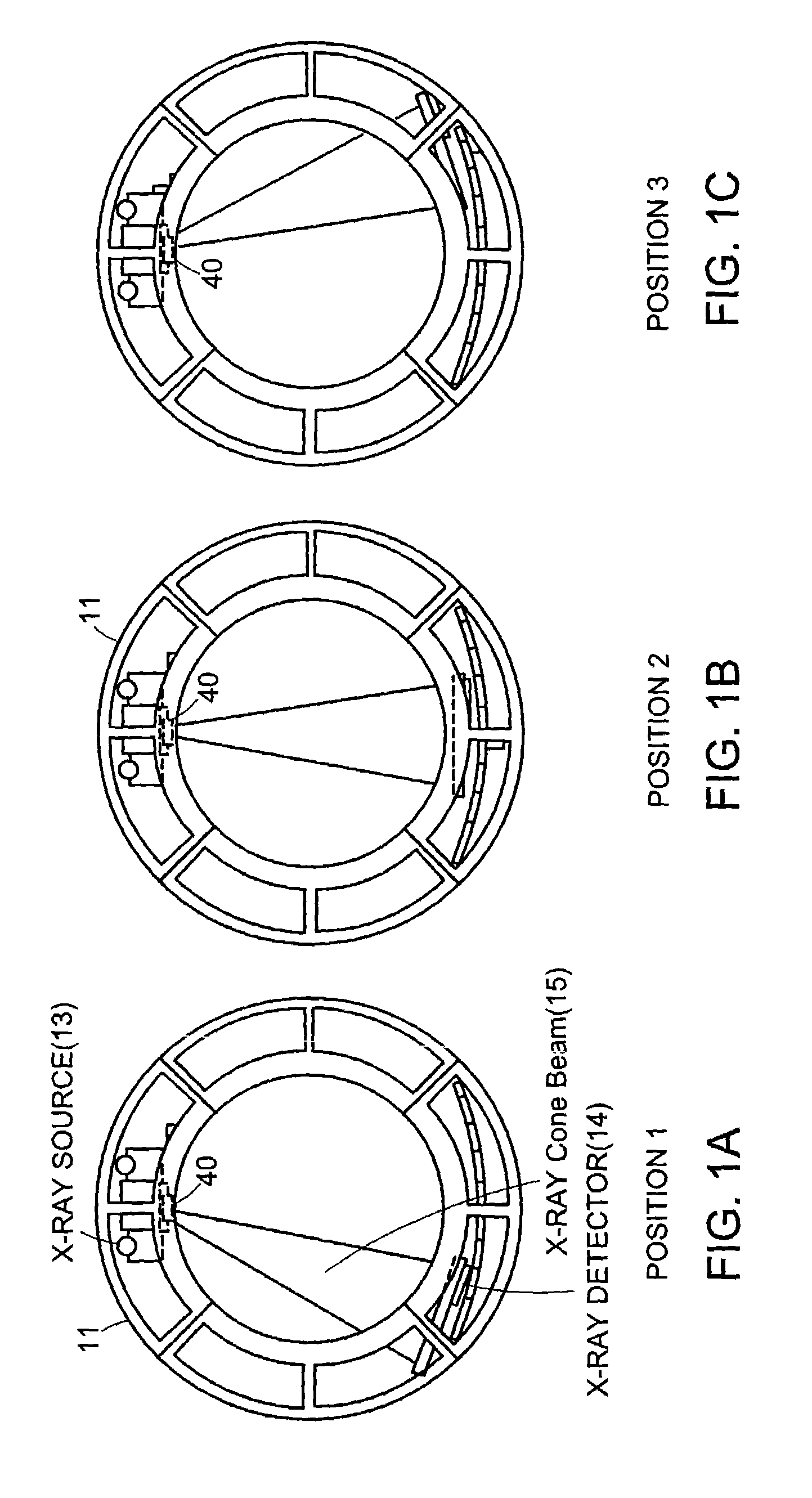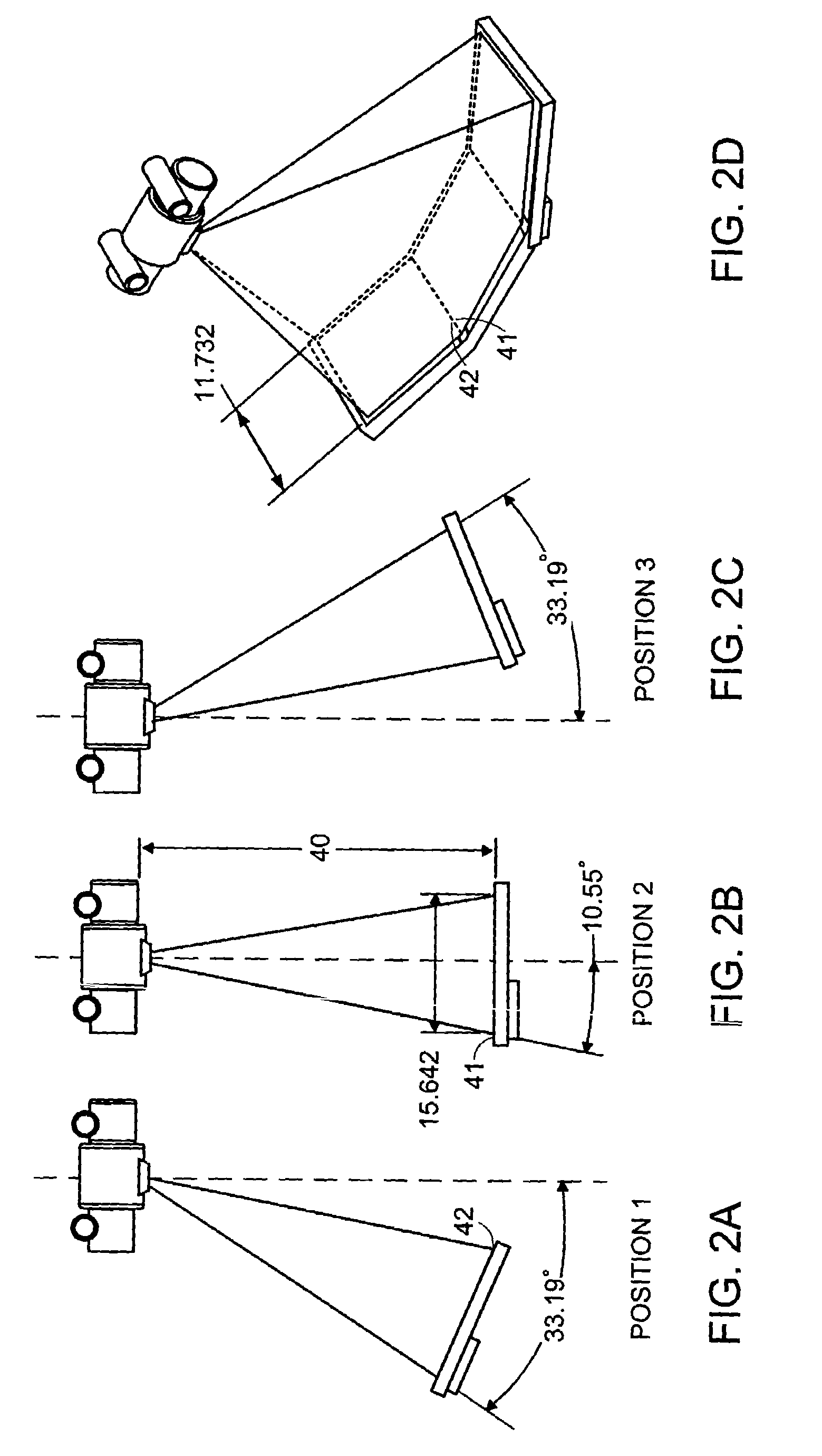Systems and methods for imaging large field-of-view objects
a large field of view object and imaging system technology, applied in the field of imaging systems and methods, can solve the problems of reducing the accuracy of image reconstruction, so as to avoid the effect of corrupted and resulting artifacts, minimizing and avoiding the effect of reducing the amount of missing data
- Summary
- Abstract
- Description
- Claims
- Application Information
AI Technical Summary
Benefits of technology
Problems solved by technology
Method used
Image
Examples
Embodiment Construction
[0032]A description of preferred embodiments of the invention follows.
[0033]FIGS. 1A–C schematically illustrate an x-ray scanning system with a translating detector array according to one embodiment of the invention. The scanning system shown in FIGS. 1A–C includes gantry 11, which in this embodiment comprises a generally circular, or “O-shaped,” housing having a central opening into which an object being imaged is placed. The gantry 11 contains an x-ray source 13 (such as a rotating anode pulsed x-ray source) that projects a beam of x-ray radiation 15 into the central opening of the gantry, through the object being imaged, and onto a detector array 14 (such as a flat panel digital detector array) located on the opposite side of the gantry. The x-rays received at the detector 14 can then be used to produce a 2D planar or 3D tomographic object reconstruction images using well-known techniques.
[0034]The detector 14 is translated to multiple positions along a line or arc in a direction...
PUM
 Login to View More
Login to View More Abstract
Description
Claims
Application Information
 Login to View More
Login to View More - R&D
- Intellectual Property
- Life Sciences
- Materials
- Tech Scout
- Unparalleled Data Quality
- Higher Quality Content
- 60% Fewer Hallucinations
Browse by: Latest US Patents, China's latest patents, Technical Efficacy Thesaurus, Application Domain, Technology Topic, Popular Technical Reports.
© 2025 PatSnap. All rights reserved.Legal|Privacy policy|Modern Slavery Act Transparency Statement|Sitemap|About US| Contact US: help@patsnap.com



